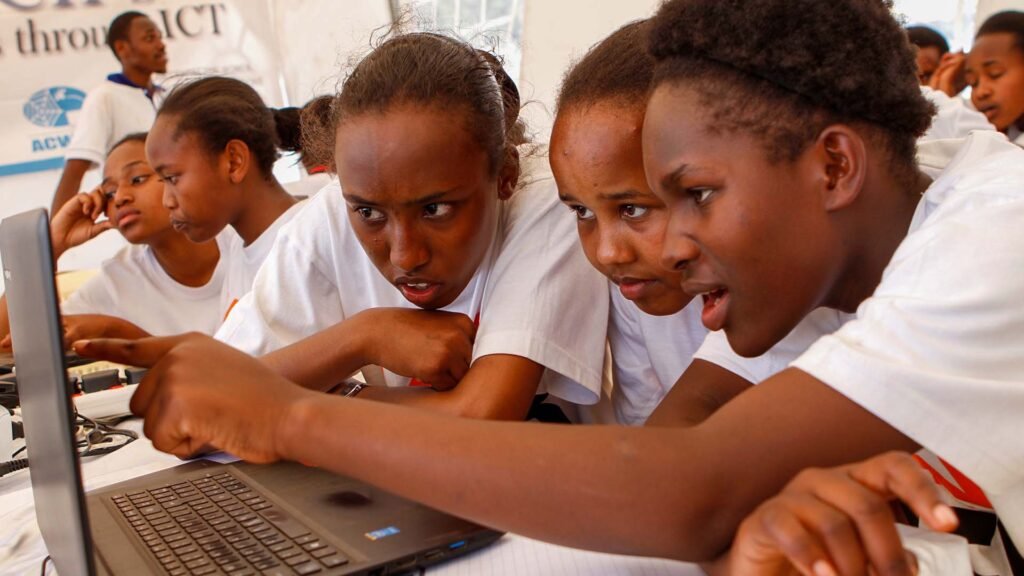Education
Overview
In an increasingly global society, it is critical that we create and expand opportunities for young girls to access the kind of education that will enable them to navigate and lead the 21st-century world they are expected to inherit. While all subject areas are important, we recognize that to thrive in our technology-driven era, young people—specifically women—need to be supported in building their skills in Science, Technology, Engineering, and Mathematics (STEM).

The Importance of STEM Education
STEM disciplines are essential for navigating and leading the modern world. Despite the importance of these fields, there is a significant gender gap in STEM education. Research published by Frontiers in Psychology highlights that less than 20% of all Bachelor’s degrees in Computer Science and Engineering are earned by women, with even fewer pursuing these fields in Sub-Saharan Africa. This disparity is often attributed to social barriers, including discrimination, biases, and societal norms that discourage women from entering STEM fields.

ACWICT’s Role in Bridging the Gender Gap in STEM
ACWICT’s Education program is geared towards addressing these gender disparities by providing a two-pronged approach that targets both the teacher and the student/pupil. Our initiatives aim to promote, attract, and retain more young women and girls in STEM and Computer Science-related careers, starting from primary school and continuing through high school and tertiary levels.
Supporting Women Science Teachers
The first level of our approach targets Women Science Teachers in both primary and secondary schools. Premised on a Training of Trainers (TOT) model, this initiative aims to build the capacity of women teachers in ICTs to improve learning outcomes and address issues affecting the Girl-Child’s pursuit of STEM studies. These teachers become ambassadors and mentors of STEM studies in their schools, not only increasing interest among school girls in STEM and Computer Science-related subjects but also innovatively changing how these subjects are taught.

Empowering Girls in Primary and Secondary Schools
The second approach targets girls in lower primary, junior & senior secondary and . This initiative is based on the need to lay a strong foundation at the primary school level. Through boot camps, girls are provided with coding skills and opportunities to interact with leading women scientists who give motivational talks and act as role models. This knowledge and understanding help girls build resilience, confidence, and interest in pursuing science subjects and mathematics as their preferred pathways of study.
Impact and Vision for the Future
ACWICT’s commitment to education in STEM has already begun to make a significant impact. In 2017, only 33% of students in STEM fields were women, a number that ACWICT aims to increase through our targeted programs and initiatives. By addressing the social and cultural barriers that prevent women from entering STEM, we are working towards a future where girls and young women can thrive in science, technology, engineering, and mathematics.
Our long-term objective is to continue creating opportunities for these young women to pursue careers in STEM-related fields. Through our initiatives, we aim to increase the representation of women in STEM, contributing to sustainable development and gender equality.

ACWICT’s Vision for an Inclusive Future
Our vision is to create a world where all girls and young women have the opportunity to pursue and succeed in STEM careers, contributing to innovation and sustainable development. By empowering the next generation with the skills and confidence to lead in STEM, we are helping to build a more inclusive and equitable future for all.
Impact
ACWICT’s efforts in promoting STEM education for young women have been impactful, with over 7,000 girls and young women trained through our programs. These initiatives continue to inspire and empower the next generation of female innovators and leaders in STEM.


